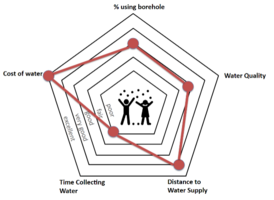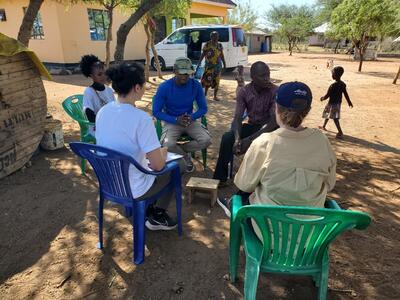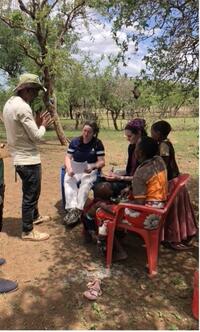This January, Yale EWB made its final trip Naitolia, Tanzania. Our goal was to check in after Covid (which kept us away from the village for over three years) and to finalize the pond project. The travel group was small: just me, Matilda, Becca, Jordan and Dave. We were joined by an engineering student from Dar es Salaam, some TPP employees, and members of the village water committee. Over seven days, we collected and tested water samples, surveyed the pond, taught sanitation classes in school, and held meetings with locals. We also conducted lots and lots of household surveys! I’ll be talking more about these surveys in this blog. Stay tuned for more blog posts about our other activities on the trip.
Background about Household Surveys
In 2017, before we first began the pond repairs, Yale EWB conducted 42 household surveys about water use. They asked questions like:
- Where do you get domestic water?
- Where do you water your livestock?
- How long does it take to source this water? How much does it cost?
- Who collects water? Do children ever miss school for water collection?
They used these questions to gauge the level of water poverty within the village, using a metric called the water poverty index. This index considers five factors: distance to water supply, time collecting water, cost of water, water quality, and % using desired source. They then ranked these factors on a scale from 1 (poor) to 5 (excellent).

Now that Naitolia pond is functional, we were curious to see if the community’s average water poverty index values have improved. During our visit this January, we spent a lot of our time driving from house to house, asking the same survey questions as in 2017. We still have a lot of data analysis to do, but we were pleased to find that about 80% of households say they use water from Naitolia pond!
My Experiences
We had just a few days to interview 42 families, so we split off into two teams: The Odd Squad (Becca and Jordan) and The Even Stevens (me and Matilda–the dream team, of course). Matilda and I took turns writing and speaking, while Jonathan, a TPP employee, acted as our trusty translator. Meanwhile, Dave collected GPS data for the houses we visited.
The people of Naitolia were so kind and welcoming. We sat under wait-a-minute trees (named for their tendency to catch passersby in hook-like prickles), surrounded by curious children and chickens pecking at our feet. Every household had different priorities and methods for collecting water. Some families had water delivered to their homes on motorcycles, while others walked many miles to the local borehole. Some families had complex rain-collection contraptions on their rooves, while others relied on pond water during the rainy season. One woman told us that her cows refused to drink anything but the highest quality borehole water. We looked behind us and, sure enough, there were two plump cows drinking from a plastic bucket. Another woman told us that her husband can’t collect water from Naitolia pond because he would have to pass through dangerous elephant territory! It was fascinating to learn more about the Maasai way of life, and to meet such a wide range of people.
Now that we are back at Yale, I am excited to analyse the survey data in more depth, and to repeat the water poverty index calculations from 2017. Hopefully, we will learn more about changes in water access since Naitolia pond’s construction. In turn, we can inform future TPP and EWB projects.

